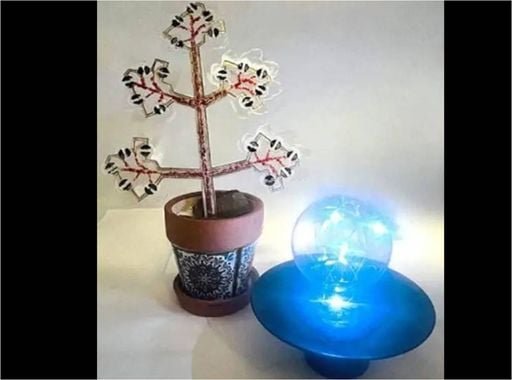Inventions
Invention: artificial plant purifies indoor air and also generates energy
Researchers at Binghamton University, in New York, USA, have created an artificial cyanobacterial plant that can clean the air, reducing carbon dioxide (CO2) levels, and also generate enough energy to power electronic devices, such as a smartphone.
#newsonleo #technology #invetion #plant

According to them, this came about unintentionally: while 'playing' with the combination of five biological photovoltaic cells and photosynthetic bacteria, they realized its practical application. So what started as a fun experiment resulted in a device that could have a big impact on air quality and energy sustainability.
What plant is this and how does it purify the air?
This invention, for now, is a proof of concept, that is: it is a practical model to establish the theoretical concept of creation. The artificial cyanobacterial plant (as it contains cyanobacteria - which carry out photosynthesis) has five artificial leaves that generate clean oxygen and remove CO2 from the air, with the capacity to generate energy to turn on a lamp or power a smartphone, for example.
The leaves use biological solar cells and photosynthetic bacteria. These cells then capture light from the internal environment and use the energy to carry out photosynthesis.
The artificial plant reduced carbon dioxide levels by 90% (from 5,000 ppm to just 500 ppm) indoors, proving to be more effective than natural plants.
According to the study, the artificial plant was able to reduce CO2 levels in the indoor environment extremely effectively, and more efficiently than natural plants.
The results showed that the plant reduces CO2 levels by up to 90% (from 5,000 ppm to just 500 ppm) indoors; natural plants can only reduce CO2 levels by 10%.
Regarding electricity generation, the plant managed to generate an open circuit voltage (OCV) of 2.7 volts and a maximum power of 140 microwatts. These values are sufficient to power portable electronic devices, showing their potential for energy generation as well.
One of its benefits is the reduction of indoor air pollution, as the plant offers a more sustainable and effective solution, which can potentially be integrated into buildings, offices and homes. Plus, sustainable energy supply in our homes.
As aplicações são várias. As plantas podem ser integradas em sistemas de construção inteligente, onde a qualidade do ar e a eficiência energética são prioridades; isso abre novas possibilidades nas áreas de design urbano e de construção sustentável.
Although the artificial plant has shown incredible results, it needs water and nutrients, conditions similar to those of a natural plant. So, future versions could incorporate methods to minimize maintenance, such as using multiple species of bacteria, as well as ways to integrate this technology into existing systems.
Researchers believe that with some adjustments, these artificial plants could become part of families' daily lives. Seokheun Sean Choi, the study's co-author, said he plans to integrate the artificial plant with an energy storage system, such as lithium-ion batteries or super capacitors, to generate enough energy for practical daily uses.